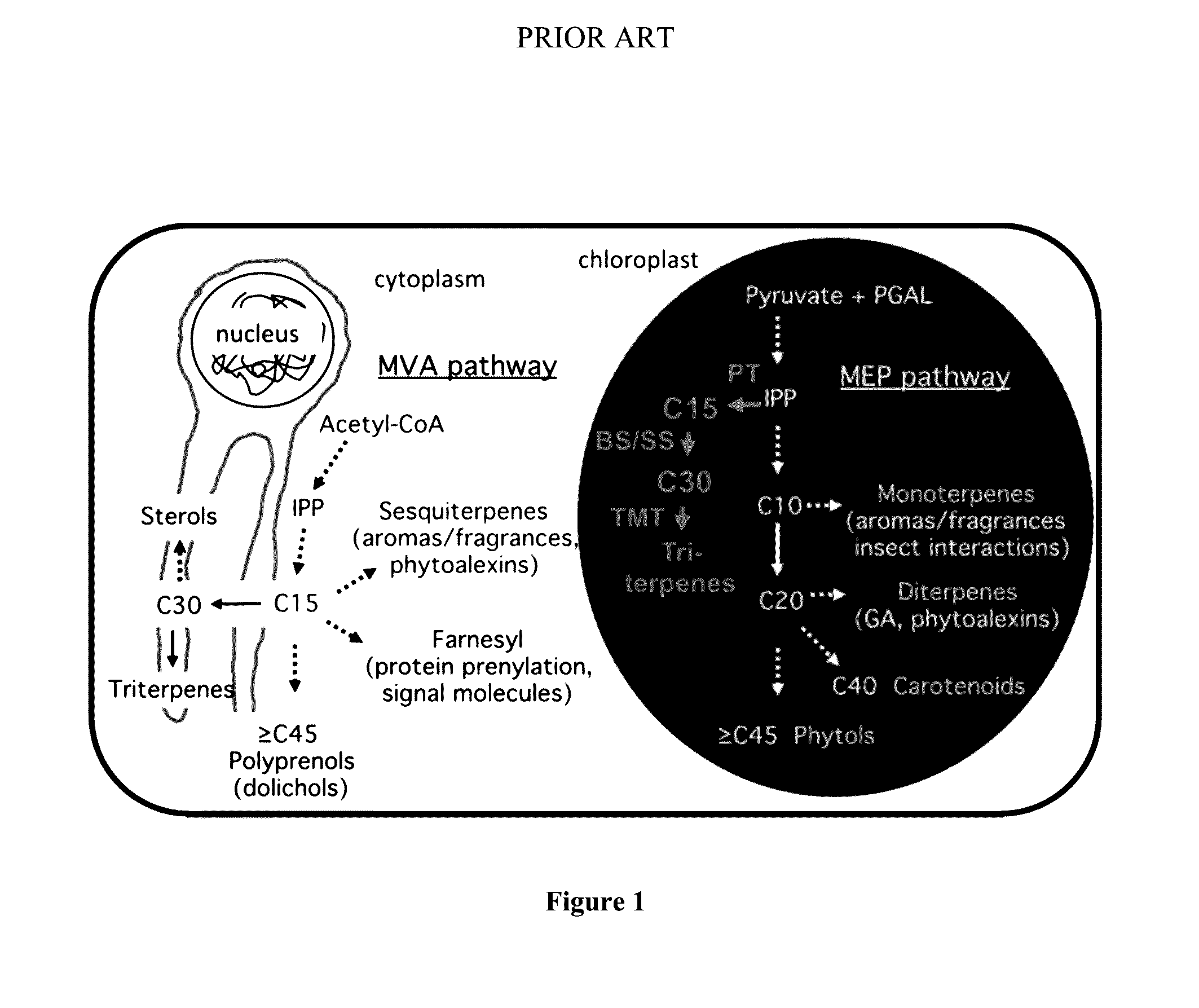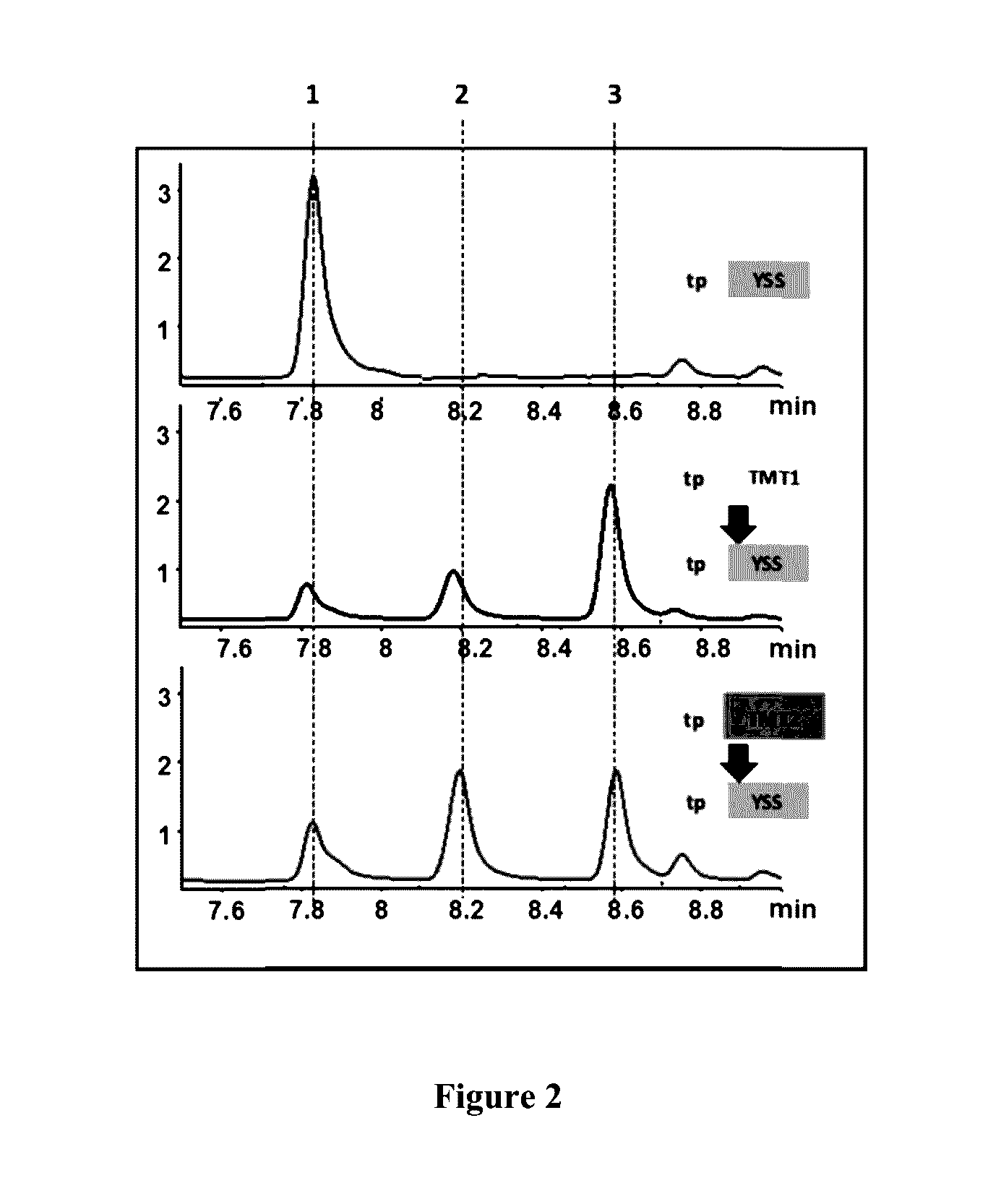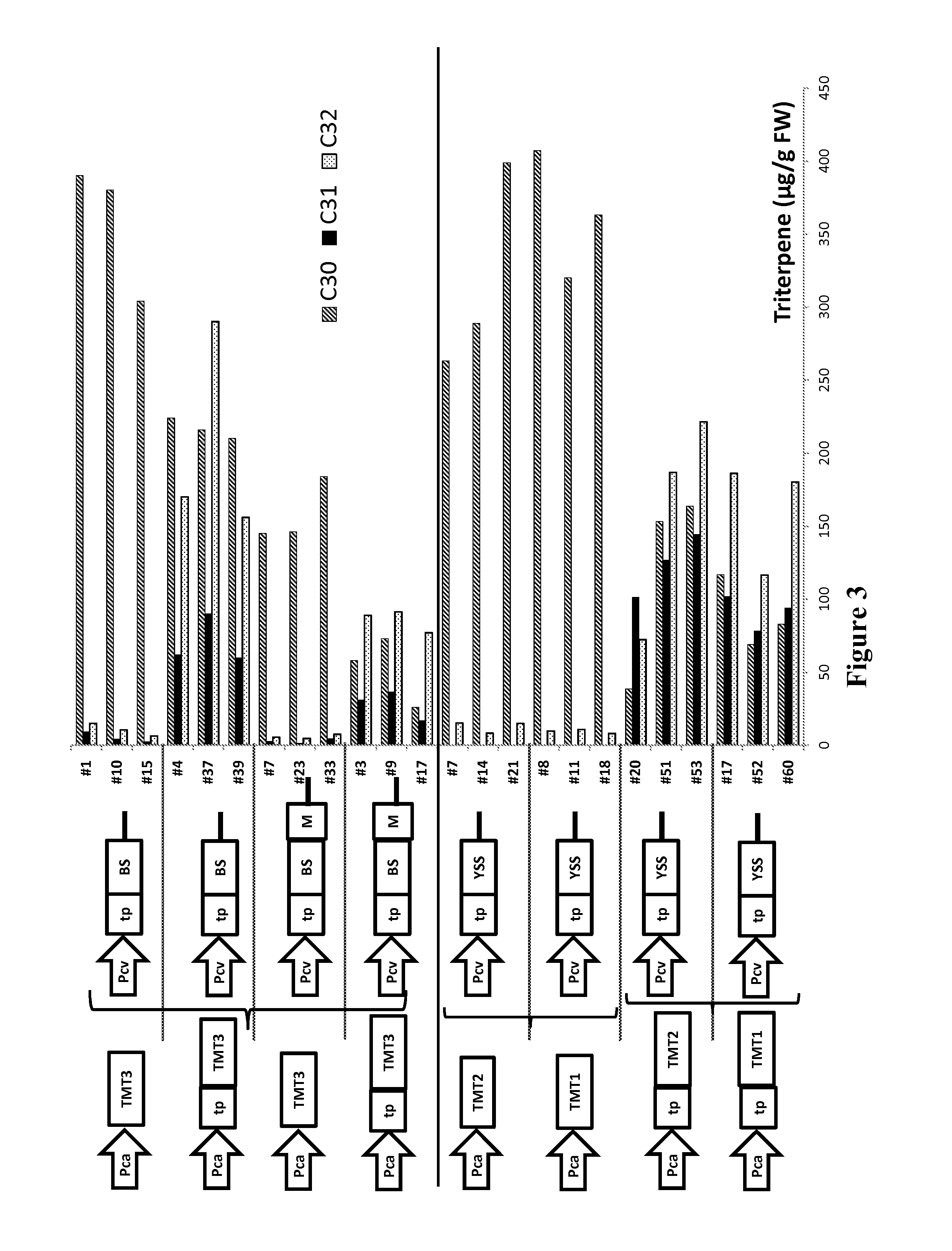Method and system for producing triterpenes
a triterpene and production method technology, applied in the field of methods and systems for producing triterpenes, can solve the problems of inability to efficiently use fpp as a substrate, serious limitations of braunii /i>a robust biofuel production system, etc., and achieve the effect of robust production level and elimination of regulatory mechanisms
- Summary
- Abstract
- Description
- Claims
- Application Information
AI Technical Summary
Benefits of technology
Problems solved by technology
Method used
Image
Examples
Embodiment Construction
[0041]The details of one or more embodiments of the presently-disclosed subject matter are set forth in this disclosure. Modifications to embodiments described in this document, and other embodiments, will be evident to those of ordinary skill in the art after a study of the information provided in this document. The information provided in this document, and particularly the specific details of the described exemplary embodiments, is provided primarily for clearness of understanding and no unnecessary limitations are to be understood therefrom. In case of conflict, the specification of this document, including definitions, will control.
[0042]Some of the polynucleotide and polypeptide sequences disclosed herein are cross-referenced to GENBANK® / GENPEPT® accession numbers. The sequences cross-referenced in the GENBANK® / GENPEPT® database are expressly incorporated by reference as are equivalent and related sequences present in GENBANK® / GENPEPT® or other public databases. Also expressly...
PUM
 Login to View More
Login to View More Abstract
Description
Claims
Application Information
 Login to View More
Login to View More - R&D
- Intellectual Property
- Life Sciences
- Materials
- Tech Scout
- Unparalleled Data Quality
- Higher Quality Content
- 60% Fewer Hallucinations
Browse by: Latest US Patents, China's latest patents, Technical Efficacy Thesaurus, Application Domain, Technology Topic, Popular Technical Reports.
© 2025 PatSnap. All rights reserved.Legal|Privacy policy|Modern Slavery Act Transparency Statement|Sitemap|About US| Contact US: help@patsnap.com



